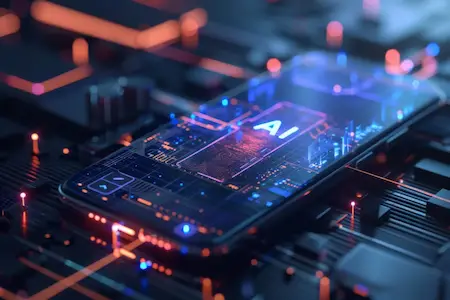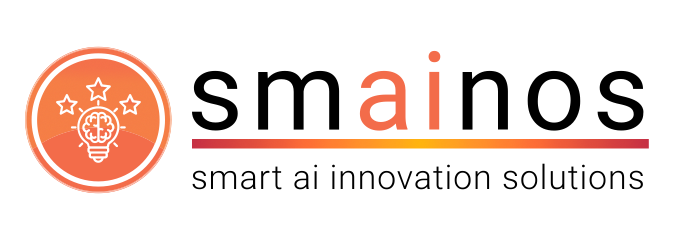
The Evolution of AI: More Than Just a Passing Trend
Artificial Intelligence has transformed from a speculative concept into a fundamental force reshaping our world. Unlike temporary tech trends that fade after brief periods of excitement, AI has demonstrated remarkable staying power and continued evolution. The trajectory of AI—from early rule-based systems to today’s sophisticated generative models and autonomous agents—reveals not just incremental improvements but paradigm shifts in capability. What makes AI distinctly different from passing trends is its deep integration across virtually every sector of the economy, its self-reinforcing improvement cycle, and its ability to fundamentally transform how businesses operate rather than simply enhancing existing processes.
In 2025, we’re seeing AI advance beyond simple pattern recognition toward true reasoning capabilities, with multimodal systems that can process text, images, audio, and video simultaneously. The development of agentic AI—systems that can autonomously execute complex tasks across multiple domains—marks another leap forward. These aren’t just technical improvements but fundamental expansions in what’s possible with the technology, confirming AI’s status as a persistent, transformative force rather than a transient trend.
AI is going to be one of the trends that is going to be the next big shift in technology. It’s going to be a democratizing force, and it’s going to change how we live and work.
-Satya Nadella, CEO of Microsoft
AI’s Transformative Impact on Business
The influence of AI on business is profound and multifaceted, extending far beyond simple automation. Organizations implementing AI are experiencing improvements across every aspect of their operations. According to recent research from Salesforce, 91% of small and medium businesses with AI report that it directly boosts their revenue, with growing businesses leading in adoption at 83% compared to their peers. This striking difference illustrates how AI is becoming a competitive differentiator rather than just an optional technology enhancement. In fact, Salesforce’s SMB Trends report shows that companies adopting AI technologies are seeing not only revenue growth but also significant operational efficiencies, with 90% reporting improved efficiency in their day-to-day operations.
In 2025, AI is revolutionizing customer experiences through personalized interactions that adapt in real-time to individual preferences and behaviors. Sales and marketing teams are leveraging predictive analytics to identify prospects with unprecedented accuracy, while AI-optimized supply chains are reducing costs and improving resilience. Perhaps most significantly, AI is enabling entirely new business models that would have been impossible just a few years ago, particularly through autonomous agents that can perform complex tasks with minimal human supervision.
The integration of AI into core business processes is creating what IBM researchers term “superagency”—the ability of humans augmented by AI to accomplish tasks previously beyond their reach. This represents a fundamental shift away from viewing AI as just another productivity tool toward seeing it as a collaborative partner that extends human capabilities in qualitatively new ways. As outlined in IBM’s report on 2025 business trends, organizations are increasingly moving beyond experimentation to implement AI across multiple business functions, with leaders actively pushing their teams to innovate with AI to capture real business value.
The Economic Impact of AI
The economic implications of AI extend far beyond individual businesses to reshape the global economy. According to McKinsey’s research, generative AI alone could add between $2.6 trillion and $4.4 trillion annually to the global economy across the 63 use cases they analyzed—equivalent to the entire GDP of the United Kingdom in 2021. As detailed in McKinsey’s comprehensive analysis, this would increase the impact of all artificial intelligence by 15 to 40 percent, representing one of the largest productivity advances in modern economic history.
However, these impressive figures come with important caveats and nuances. Nobel laureate economist Daron Acemoglu suggests a more conservative estimate, projecting that AI might boost US GDP by around 1% over the next decade, estimating that only about 5% of tasks will be able to be profitably performed by AI within that time frame. This more modest projection highlights the challenges in implementation and the time required for technologies to fully permeate economic systems.
The International Monetary Fund has identified both opportunities and challenges in AI’s economic impact, noting that about 60 percent of jobs in advanced economies may be impacted by AI, with roughly half potentially benefiting from productivity enhancements and the other half facing possible labor demand reductions. This uneven distribution of impacts underscores the need for thoughtful policy approaches to ensure AI’s benefits are widely shared while its disruptions are effectively managed.
What’s clear from these varied projections is that AI is not a speculative economic force but an increasingly measurable driver of productivity, innovation, and growth—with effects that will continue to compound over time rather than diminishing as would be expected of a passing trend.
Recent Advances Cementing AI’s Permanent Role
Multimodal Capabilities: Today’s leading AI systems have evolved beyond text-only interfaces to become truly multimodal, processing and generating content across text, images, audio, and video. As Stanford’s 2025 AI Index highlights, models like Claude 3.5, Gemini 2.0 Flash, Llama 3.3, Phi-4, and OpenAI’s o1 have all gained sophisticated multimodal capabilities, enabling more natural and versatile interactions that mirror human communication patterns. This comprehensive report tracks AI’s evolution across technical performance, economic impact, education, policy, and responsible AI, providing an empirical foundation for understanding AI’s rapid trajectory.
Agentic AI Systems: One of the most transformative developments is the rise of agentic AI—systems that can autonomously execute complex tasks by accessing tools, making decisions, and taking actions. Microsoft predicts that “agents will begin to transform every business process, revolutionizing the way we work and manage our organizations”. These systems represent a fundamental shift from passive AI assistants to active collaborators that can initiate and complete multi-step processes with minimal human intervention.
Specialized Small Models: While large language models dominated early discussions, we’re now seeing a proliferation of smaller, specialized models optimized for specific tasks or industries. According to analysts, these smaller models “excel in precision and efficiency, catering to industries with unique demands like finance, healthcare, and robotics” while requiring less computational resources—making AI more accessible and sustainable.
Infrastructure Improvements: Technical advances in the underlying hardware and software infrastructure for AI are accelerating capability development while reducing costs. The development of more efficient training methods, specialized AI chips, and cloud-based AI platforms has created a robust ecosystem that will continue supporting AI advancement regardless of any temporary fluctuations in market interest.
These advances collectively represent a maturing AI ecosystem where innovation occurs not just in research labs but across a diverse landscape of applications, industries, and approaches—creating the kind of self-sustaining momentum that characterizes fundamental technological shifts rather than ephemeral trends.
AI’s Influence on Society and Daily Life
AI’s impact extends far beyond business and economics, permeating our daily lives in ways both visible and invisible. In healthcare, AI systems are increasingly assisting with diagnostics, treatment planning, and drug discovery, potentially saving countless lives through earlier and more accurate interventions. Education is being transformed through personalized learning experiences that adapt to individual students’ needs, making quality education more accessible and effective regardless of geographic or socioeconomic factors.
In our homes, AI-powered devices are becoming ubiquitous, from smart speakers and thermostats to security systems and entertainment services. These technologies are creating more comfortable, efficient, and connected living environments while simultaneously reshaping our relationship with technology itself. According to recent research, the integration of AI into everyday devices is accelerating, with Microsoft noting that in 2025, “AI will evolve from a tool for work and home to an integral part of both”.
Urban infrastructure is being enhanced through AI-powered systems for traffic management, energy optimization, and public safety, creating smarter cities that respond dynamically to residents’ needs. Even creative fields like art, music, and literature are being influenced by AI tools that can generate original content, suggest ideas, or collaborate with human creators to push the boundaries of expression.
This societal integration of AI—characterized by increasingly invisible and natural interactions—represents a fundamental shift in how technology functions in our lives. Unlike trends that capture momentary attention before fading, AI is becoming woven into the fabric of society itself, creating lasting changes in how we live, work, learn, and interact.
Challenges for Small and Medium Businesses
While AI offers tremendous opportunities for businesses of all sizes, small and medium businesses (SMBs) face unique challenges in adoption. According to recent research, while 75% of SMBs are at least experimenting with AI, with growing businesses leading in adoption at 83%, meaningful implementation can be hindered by several factors.
One significant barrier is the perception gap—many SMB leaders who haven’t adopted AI underestimate its prevalence, with only a third of non-users believing AI is commonly used among their peers, compared to 80% of those already using AI. This creates a situation where businesses may delay adoption simply because they don’t realize how quickly the competitive landscape is changing.
Technical infrastructure presents another challenge. As Techaisle’s research indicates, effective AI implementation “depends on access to high-quality training data and robust processing power,” requiring computing resources with powerful GPUs, ample memory, and sufficient storage capacity. For many SMBs with limited IT budgets and expertise, these requirements can seem daunting.
Additionally, SMBs often struggle with identifying the most appropriate AI applications for their specific needs. According to Techaisle, in 2025, SMBs will “grapple with identifying practical AI applications, ensuring ethical and unbiased AI usage, and addressing the growing skills gap in AI expertise”. Without clear implementation roadmaps, many smaller businesses find it difficult to translate AI’s potential into actionable strategies.
Despite these challenges, the evidence suggests that AI adoption among SMBs is accelerating as the technology becomes more accessible and the competitive advantages become more apparent. For businesses that successfully navigate the implementation hurdles, AI represents not just an operational enhancement but a strategic differentiator that can level the playing field with larger competitors.
Preparing for an AI-Driven Future
As AI continues to shape our world, preparing for an AI-driven future is crucial for individuals, businesses, and societies. AI literacy is becoming an essential skill across all sectors, from executive leadership to frontline workers. Understanding AI’s capabilities, limitations, and potential applications is increasingly vital for workers at all levels who need to collaborate effectively with these technologies.
For businesses, strategic AI integration requires a thoughtful approach that goes beyond simply adopting the latest tools. This includes developing clear AI strategies aligned with business objectives, investing in appropriate infrastructure and data governance, and creating ethical frameworks to guide AI implementation. As competition in the AI landscape intensifies, organizations that develop systematic approaches to AI adoption will gain significant advantages over those pursuing ad hoc implementations.
Education systems must adapt to this new reality by integrating AI literacy into curricula at all levels. Schools, universities, and vocational institutions have a critical role in preparing future generations for the evolving demands of the workforce. Lifelong learning initiatives will also be essential to reskill employees throughout their careers, ensuring that workers can adapt to changing job requirements and opportunities.
Policy frameworks that balance innovation with appropriate safeguards will be crucial for maximizing AI’s benefits while mitigating potential risks. This includes addressing challenges related to data privacy, algorithm bias, cybersecurity, and the digital divide to ensure that AI’s benefits are broadly shared across society.
According to the World Economic Forum’s Future of Jobs Report 2025, the impact of AI is projected to create around 170 million new jobs by 2030, while displacing approximately 92 million positions, resulting in a net gain of 78 million jobs globally. This underscores the importance of proactive skill development to help workers transition into these growing roles, with nearly 40% of skills required on the job expected to change by 2030. The report highlights that technology skills in AI, big data, and cybersecurity will be in high demand, alongside crucial human skills like creative thinking and adaptability.
For those looking to deepen their understanding of AI and continue their education, Smainos offers comprehensive resources through our blog article “The Complete AI Education”, which includes book suggestions and links to online video training from Microsoft, Google, and other reputable sources. Additionally, the Smainos shop features a curated selection of books covering various aspects of AI, from societal and economic impacts to technical topics like AI engineering and Large Language Model development.
In this rapidly evolving AI landscape, especially for small and medium businesses, having expert guidance is invaluable. This is where Smainos plays a crucial role as an AI agency specializing in helping SMBs navigate their AI journey. Smainos offers a comprehensive suite of services tailored to the unique needs of smaller organizations, from initial AI potential analysis and strategy development to the creation of custom AI agents, workflow optimization solutions, and data analytics implementations.
With expertise in both the strategic and technical aspects of AI, Smainos bridges the gap between AI’s potential and practical business implementation, helping SMBs overcome common adoption challenges through personalized guidance and solutions. By partnering with an AI specialist like Smainos, small and medium businesses can accelerate their AI transformation journey, avoiding common pitfalls while maximizing the technology’s benefits for their specific contexts and goals.
Conclusion: AI as a Fundamental Shift
Far from being a passing trend, AI represents a fundamental technological shift comparable to the introduction of electricity or the internet. Its impact will continue to expand and deepen over time, transforming not just individual businesses or industries but the entire economic and social landscape. The evidence is clear: organizations that treat AI as a strategic priority rather than a temporary phenomenon will be better positioned to thrive in this new era.
The self-reinforcing nature of AI progress—where each advance creates opportunities for further innovation—distinguishes it from typical technology trends that follow predictable hype cycles. As AI systems become more capable, accessible, and integrated into our daily lives and work, their transformative potential only increases. The question for businesses and individuals is not whether AI will remain relevant, but how to adapt and thrive in a world where AI is an essential component of competitive success.
By understanding AI not as a trend but as a fundamental shift in how we approach problem-solving, decision-making, and value creation, organizations can develop more effective strategies for harnessing its benefits. This perspective encourages long-term investment in AI capabilities, data infrastructure, and talent development rather than quick-fix solutions aimed at temporary advantages.
Ultimately, AI’s staying power comes from its unique ability to enhance human capabilities rather than simply replacing them. By embracing AI as a collaborative partner that augments our strengths while compensating for our limitations, we can unlock new possibilities for innovation, productivity, and growth that extend far beyond what either humans or machines could achieve independently. This symbiotic relationship between human creativity and AI capabilities represents not just a technological evolution but a new chapter in human progress itself.
Are you ready to start your AI journey? Contact Smainos today through our contact form at smainos.com/contact to discuss how we can help your business implement AI solutions that drive real results. Our team of experts is ready to guide you through every step of the process, from initial assessment to full implementation, ensuring that your AI initiatives are aligned with your business goals and deliver measurable value.


